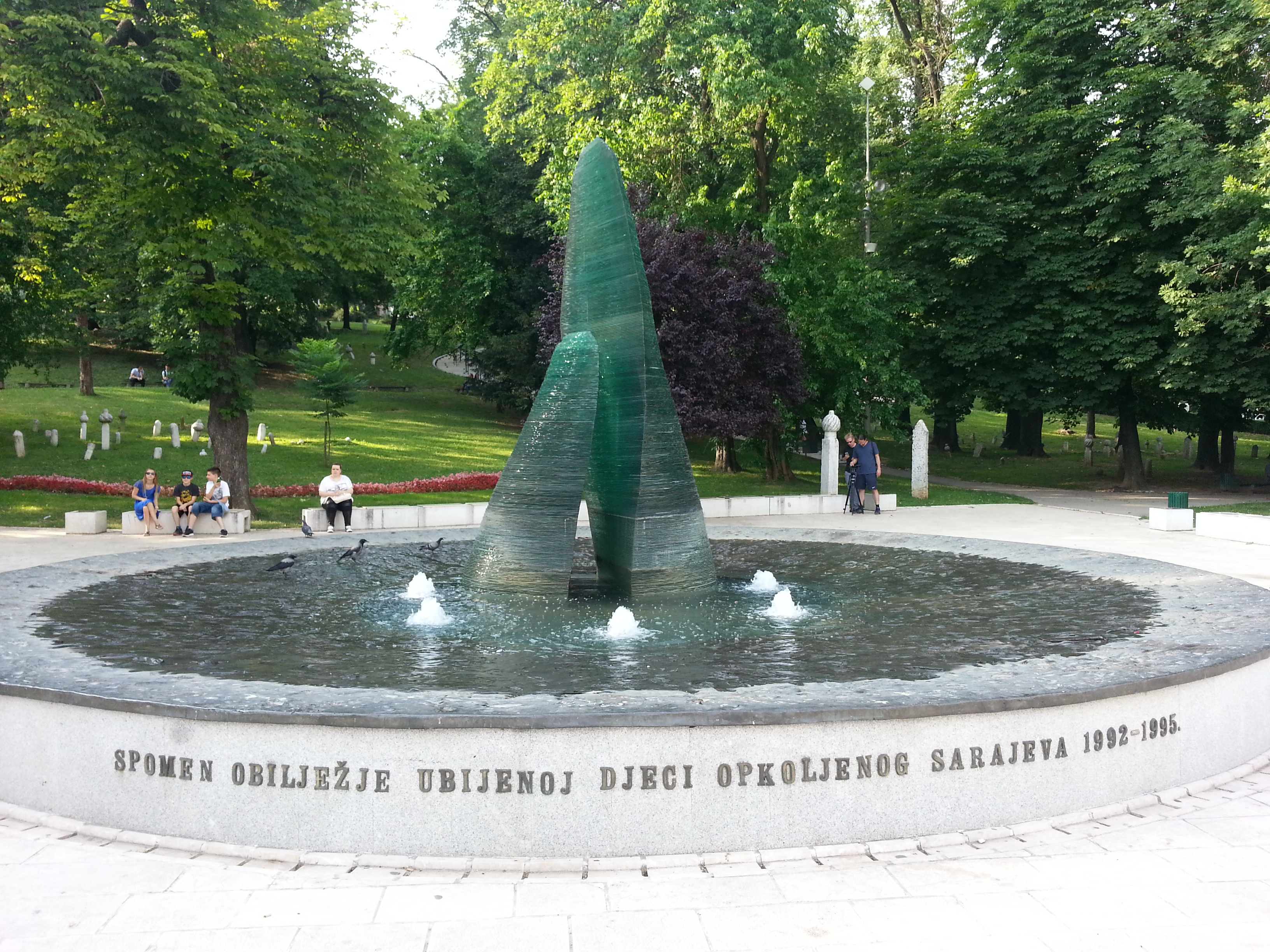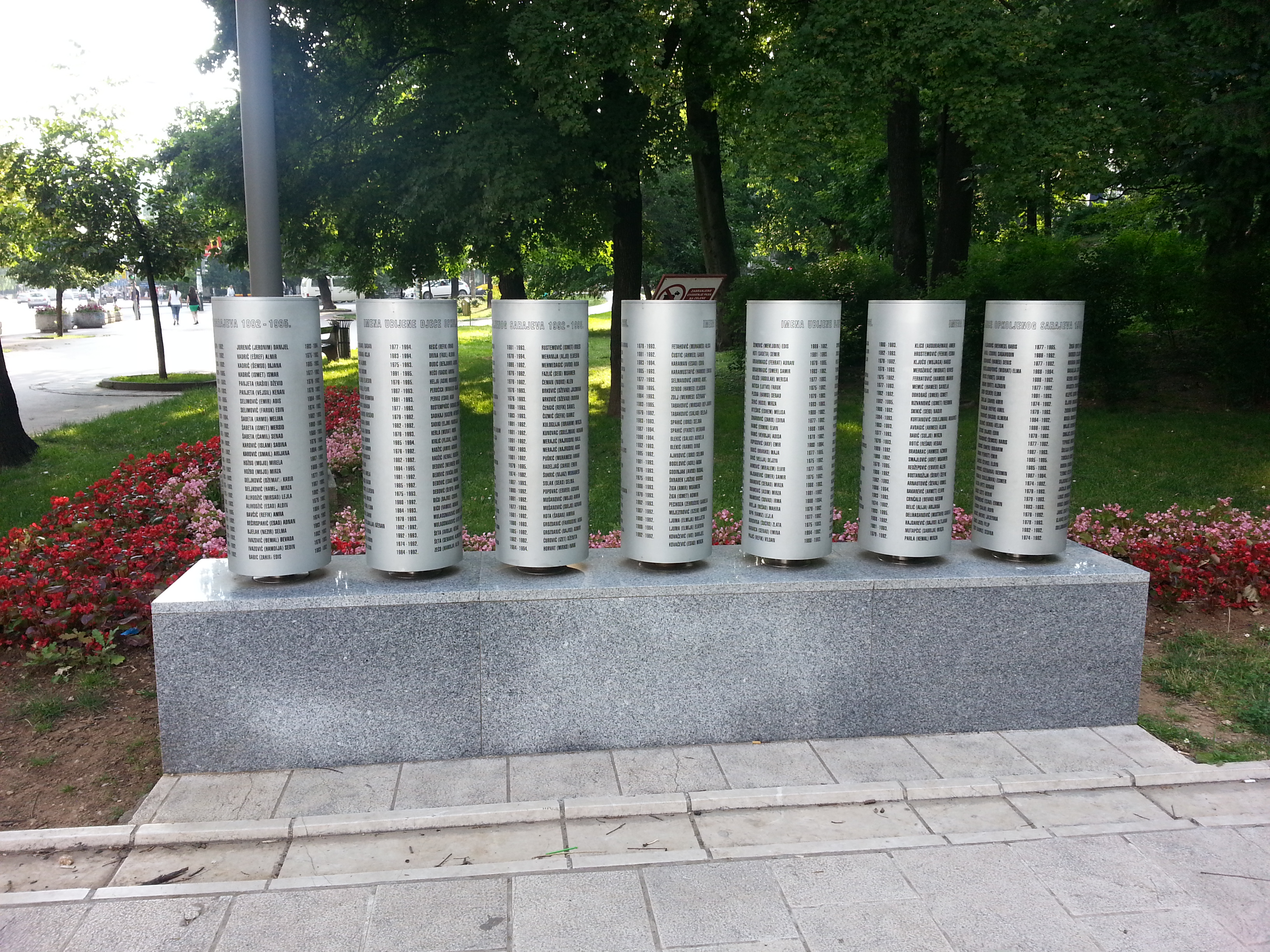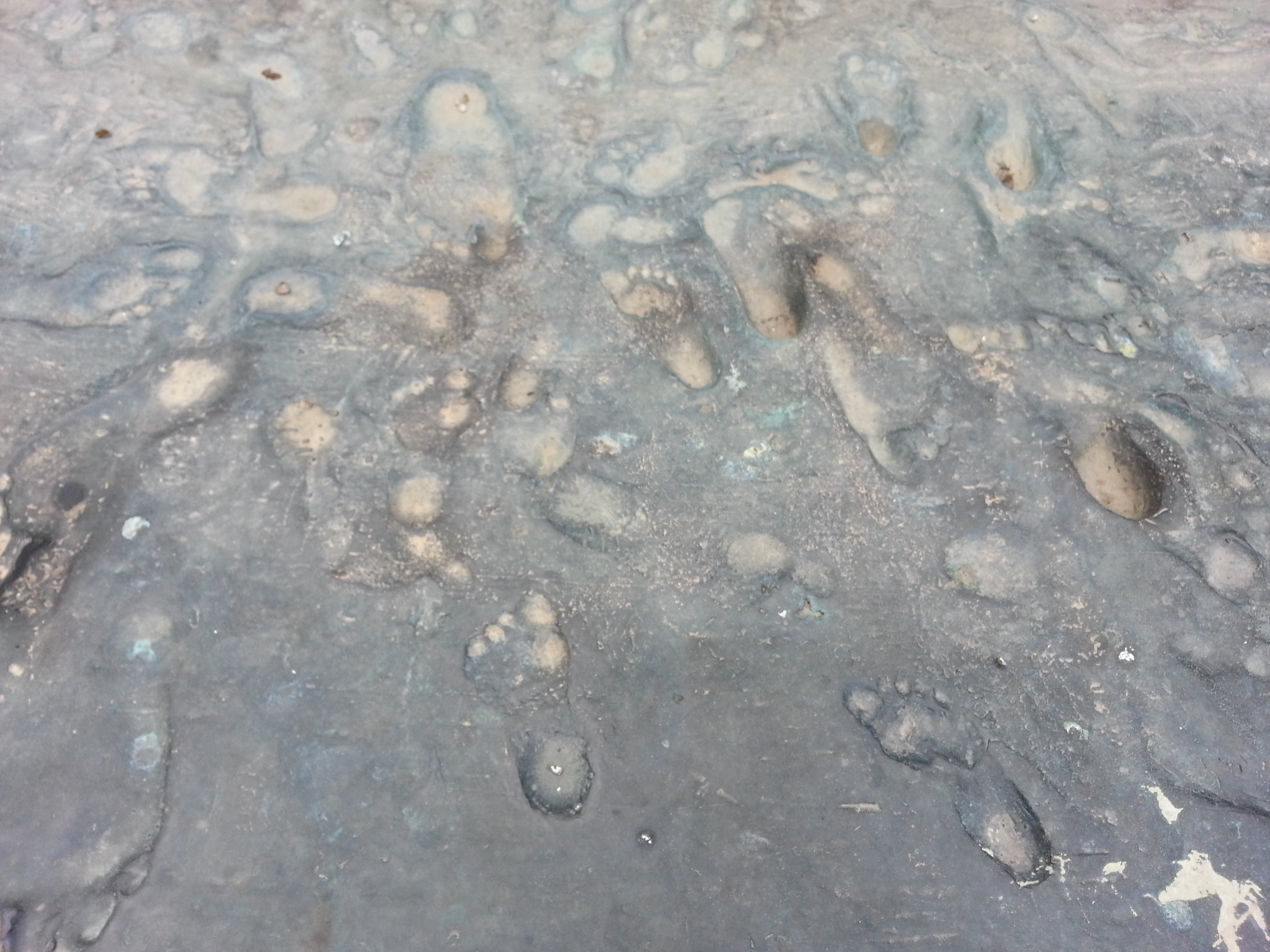I didn’t see the footprints: memorials for children in Bosnia and Hercegovina
“The footprints! They’re all over the fountain. They make my heart break.”
“I didn’t see them”.
I was in Sarajevo, Bosnia, to attend a summer school called “Learning from the past: transitional justice”. The footprints were part of a memorial to children killed during the siege of Sarajevo in 1992-1995. I was at the summer school because I wanted to learn more about the people I interview for my PhD – survivors of the Bosnian war of 1992-1995, who moved to Australia when they were children.

I had visited the memorial and seen the fountain and the accompanying scrolls with the names of the children. I had turned the scrolls repeatedly, thinking about which ethnic group most of the children were from. In doing so, I had unconsciously fallen in to the trap of nationalist memorialisation and ethnic segregation that is common in so many monuments throughout Bosnia.
My visit to the fountain – and the fact I read the scrolls but missed the footprints – made me think about the ways in which children’s experiences are remembered and interpreted. What are we looking for when we visit children’s memorials? Why are children memorialised and not their adult family members who may well have died alongside them?

When I returned to the monument a second time to see the footprints, I found myself thinking not of the children who died, but those who survived by leaving Sarajevo, including those who left on foot through Sarajevo’s Tunnel of Hope.
The most well-known example of a child refugee from Sarajevo is Zlata Filipović, who kept a diary of her family’s experiences before they fled Sarajevo for Paris in 1993, when Zlata was 13 years old. Zlata described scenes of children leaving Sarajevo and Zenica (a city one hour from Sarajevo):
Friday 3 April 1992
Daddy came back from Zenica all upset. He says there are terrible crowds at the train and bus stations. People are leaving Sarajevo. Sad scenes. They’re the people who believe the misinformation. Mothers and children are leaving, the fathers are staying behind, or just children are leaving, while their parents stay. Everybody is in tears. Daddy says he wishes he hadn’t seen that.” Zlata’s Diary, 1993, pp28-29
My thoughts turned to the child refugees – now adults – I am interviewing all the way on the other side of the world, in Australia. Many of them would have been part of the terrible crowds at train and bus stations described by Zlata.
The footsteps made me think of one of my interviewees, Emina (a pseudonym) who described the loss of her connection with her home city and her sadness over her relationship with Sarajevo today. Despite knowing that she was a child when she left, she feels survivor guilt that she and her family escaped while others stayed through the hardships of the siege.
Unlike the children represented by this fountain, Emina obviously survived. Yet such a memorial is intended to only speak for those who can no longer speak for themselves. Can there ever be room for stories and losses like Emina’s in such monuments?

[…] read back through my writing on memorials I visited last year in Bosnia and Herzegovina, including this one for killed children; I wondered about my friend Amar who lives in Banja Luka, in Republika Srpska, […]